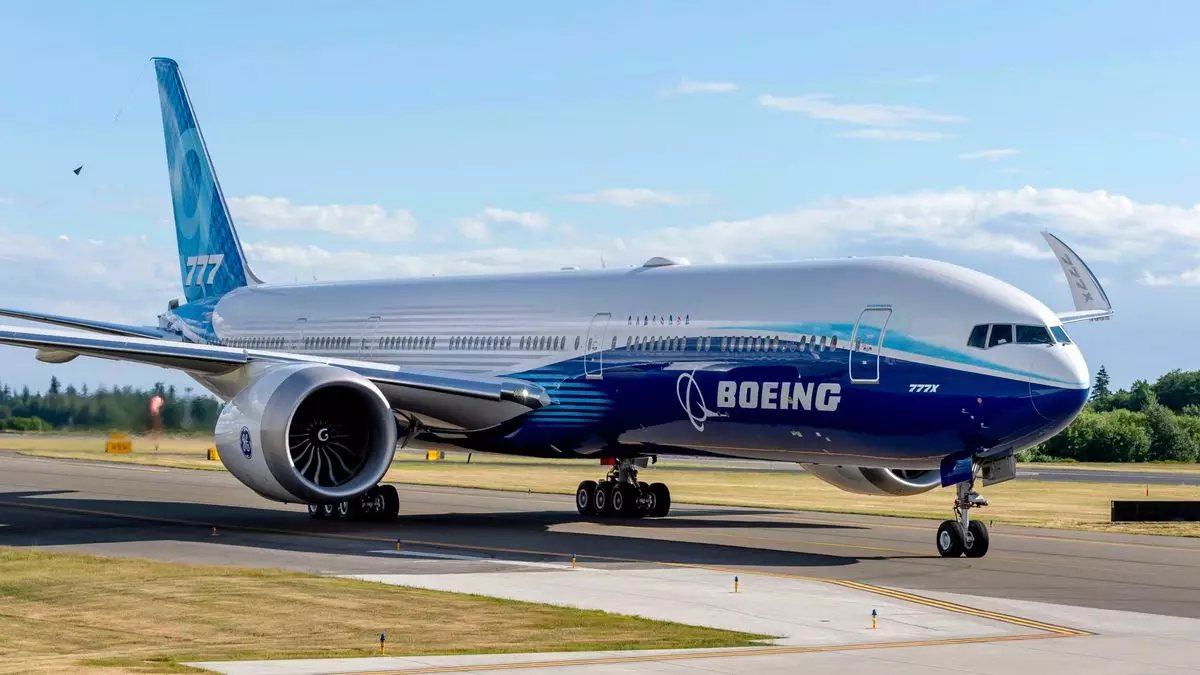In a significant and distressing announcement, Boeing has revealed plans to lay off roughly 10% of its workforce—approximately 17,000 employees—as the company grapples with mounting financial losses and a debilitating strike that has severely disrupted the production of its most lucrative airline models. This drastic action underscores a broader trend of instability within the aerospace giant, and it’s indicative of the pressing challenges that new CEO Kelly Ortberg is tasked with managing.
Boeing’s workforce, which currently numbers around 170,000 worldwide, will see reductions affecting a range of positions, from executives to front-line employees. Ortberg communicated this decision in a memo dated October 11, suggesting a grim outlook for the company amidst ongoing financial strain. The message conveys not only the immediate repercussions of the layoffs but also reflects the long-term restructuring necessary for the company’s survival in a highly competitive industry.
Boeing’s financial picture paints a troubling scenario. The company has reported staggering losses exceeding $25 billion since the beginning of 2019, accentuating the fiscal crisis at hand. Recent third-quarter projections revealed an alarming cash burn of $1.3 billion, alongside a loss of $9.97 per share, significantly underperforming analysts’ expectations. Notably, the anticipated loss was forecasted at $1.61 per share, yet these estimates failed to take into account substantial write-downs linked to production delays and a series of financial missteps.
As Boeing grapples with these pressing financial challenges, delayed product releases, such as the anticipated rollout of the 777X being pushed to 2026, further complicate its recovery trajectory. Additionally, the decision to cease production of the cargo version of the 767 by 2027 signals a strategic contraction and may restrict Boeing’s future revenue streams. This landscape of shrinking manufacturing capabilities is unfurling alongside a significant strike by approximately 33,000 union machinists, which has effectively halted production on key aircraft models including the 737 Max and 777s.
Union Negotiations and Legal Challenges
The ongoing strike, which began on September 14, speaks volumes about the precarious relationship between Boeing and its workforce. Despite two days of negotiations this past week failing to yield any resolutions, tensions reached a tipping point when Boeing filed a charge of unfair labor practices against the International Association of Machinists and Aerospace Workers. This conflict hints at deeper systemic issues that may prolong both the strike and the company’s recovery.
Boeing’s legal entanglements do not end there; the Federal Aviation Administration (FAA) has intensified its scrutiny over the company, especially after safety incidents involving the 737 Max. While the company has agreed to plead guilty to conspiracy charges related to these lapses, the implications of such agreements might shake consumer confidence and attract persistent scrutiny from regulatory bodies.
Kelly Ortberg represents a new face at the helm of Boeing, taking on the role of CEO in August, making him the third leader in under five years to navigate the company through turbulence. His extensive experience in the aerospace sector marks an asset, yet as an outsider to Boeing’s organizational culture, he confronts a challenging atmosphere as he seeks to revitalize the company. Ortberg’s candid acknowledgment of the difficulties ahead hints at the magnitude of the restructuring processes that will be necessary for Boeing to regain its footing.
As Boeing awaits the formal release of its full third-quarter results on October 23, the narrative of recovery remains fraught with uncertainty. The circulation of safety concerns, financial instability, and labor disputes creates a complex web of challenges for the company. In sum, as Boeing prepares to cut costs through layoffs, stakeholders will be watching closely to see whether this strategy will help the company stabilize or if it signals deeper, unresolved issues within the organization.
The combination of these factors forms a pivotal moment in Boeing’s history. With its commitment to retaining competitiveness and fulfilling customer demands, the future hinges upon Ortberg’s capacity to steer the company through these rocky waters, ultimately seeking to re-establish Boeing as a leader in the aerospace industry.

